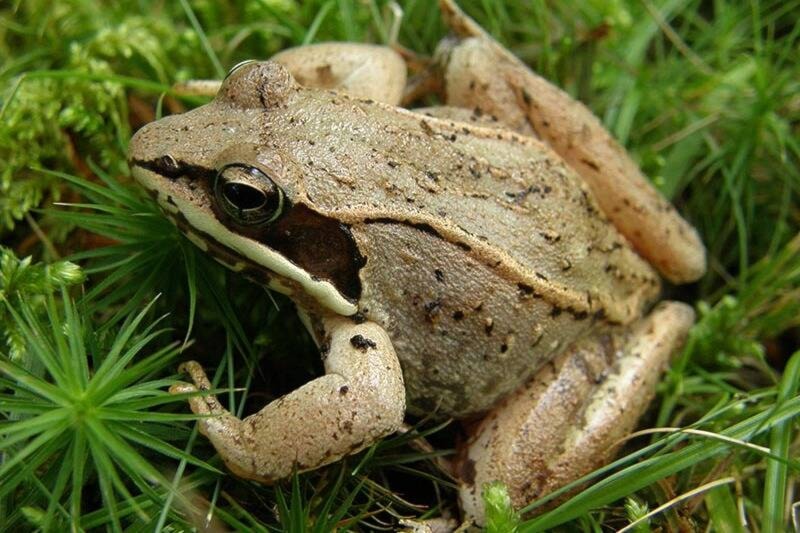Meet a true northerner. The wood frog can be found throughout the north from the edge of the Arctic Ocean in western Canada down to the southern Appalachians in the eastern U.S. with isolated colonies scattered further south.
Wood frogs occur farther north than any other amphibian in North America and can tolerate being frozen for up to seven months of the year.
The wood frog prefers to breed in temporary (ephemeral) shallow pools that fill up in the spring as the ice and snow melts, but that dry out before the end of the summer. These ‘vernal’ pools are not around long enough for the predatory fish to get established that would eat the frog tadpoles.
If you have pools like these you might get lucky and hear the crazy, almost maniacal “quacking or clucking ducks” sounds made by the male frogs as they call to the females. Listen for the racket in or around the third week of April.
Once the adults are finished mating and the tadpoles have matured into froglets, they disperse from the pool into the surrounding moist upland forest and have been known to travel hundreds of metres away from the natal pool.
Compared with most other related frogs, the wood frog has a very high degree of terrestrialism, spending most of its life away from water.
The adult frogs are greenish tan or darker to reddish-brown with have a very distinctive elongated black ‘mask’ running over each eye from the tip of the nose back toward the shoulder. In addition, they have a white stripe along the edge of the upper lip below the mask. The body may be covered with dark blotches.
Wood frog adults are ‘freeze-tolerant’ and survive by producing more urea and glucose than other frogs. These compounds act as ‘cryoprotectants’ preventing the cell contents from freezing. In addition, the frog livers contain high amounts of glycogen that can be quickly converted to sugar if needed.
Many scientific studies have been done to understand how wood frogs do this, especially as it could be useful for freezing and thawing human organ transplants.
In the fall, adults migrate back to get closer to their preferred breeding pools but stay in the upland forest. There, they survive winter in hibernacula — shallow holes or burrows in the upper soil layers underneath the litter layer.
In alpine areas they survive in shrubby or sedge-dominated habitats.
